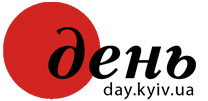Minister of Defense Volodymyr Shkidchenko said there was an urgent need to launch “broadly based organizational and research work to mobilize potential and available resources of the Armed Forces of Ukraine for the goals of antiterrorist struggle.” Gen. Shkidchenko believes that, taking into account the composition and structure of the armed forces of most developed countries, it is advisable to make a fuller use of intelligence agencies to combat terrorism. “Although military intelligence agencies have specific goals, their means and forces (agents; electronic, aerial, artillery, and space surveillance; telecommunications monitoring) can become sources of valuable information about the intentions and actions of terrorist groupings,” the defense minister noted in a article published by the newspaper Uriadovy kurier last Thursday.
Gen. Shkidchenko singled out the special forces as another military element suitable for antiterrorist warfare. In the minister’s opinion, special force operations can also be conducted with the aid of reconnaissance, air mobile, landing and assault, and other units. Of great importance is air defense. “Air strikes present the greatest danger, as far as acts of terror are concerned, so it is of paramount importance to timely detect and destroy air targets,” Gen. Shkidchenko emphasized.
An important component of this warfare is radiological, chemical, and biological protection, electronic countermeasures, mine disposal, and the neutralization of computer hackers. The armed forces possess a sufficiently strong potential to fulfill these tasks, the minister thinks. “Finally, the armed forces can make use of all the available firearms to destroy terrorist groups and formations,” Gen. Shkidchenko stressed, adding that “all this applies to the Armed Forces of Ukraine.”
Simultaneously the minister noted that the Ukrainian armed forces’ capabilities in combating terrorism “are limited, first, due to insufficiently clear legal and normative instruments that set out the respective functions and missions and, secondly, due to absence of the necessary elements in the system of combat training, command, cadre, military education, and research.”






